

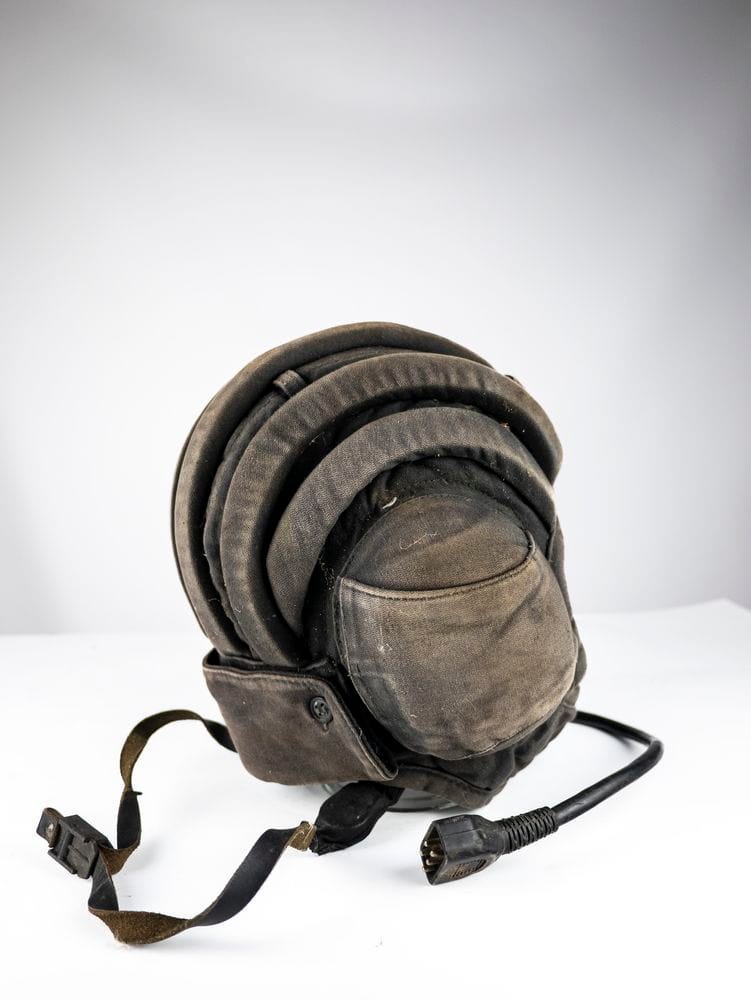

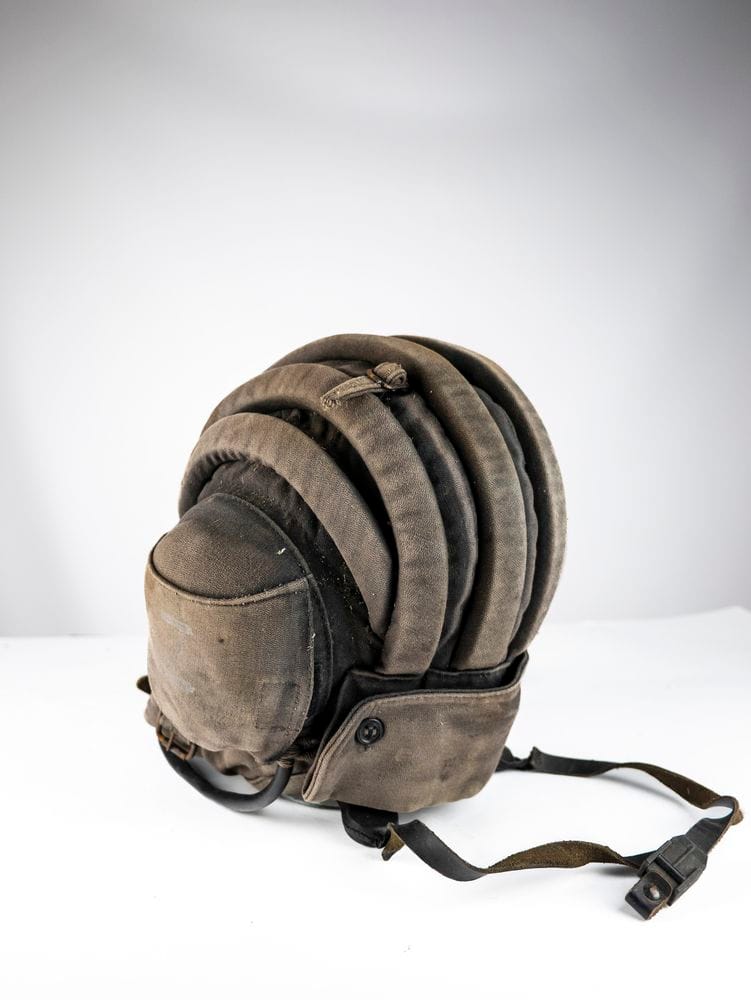
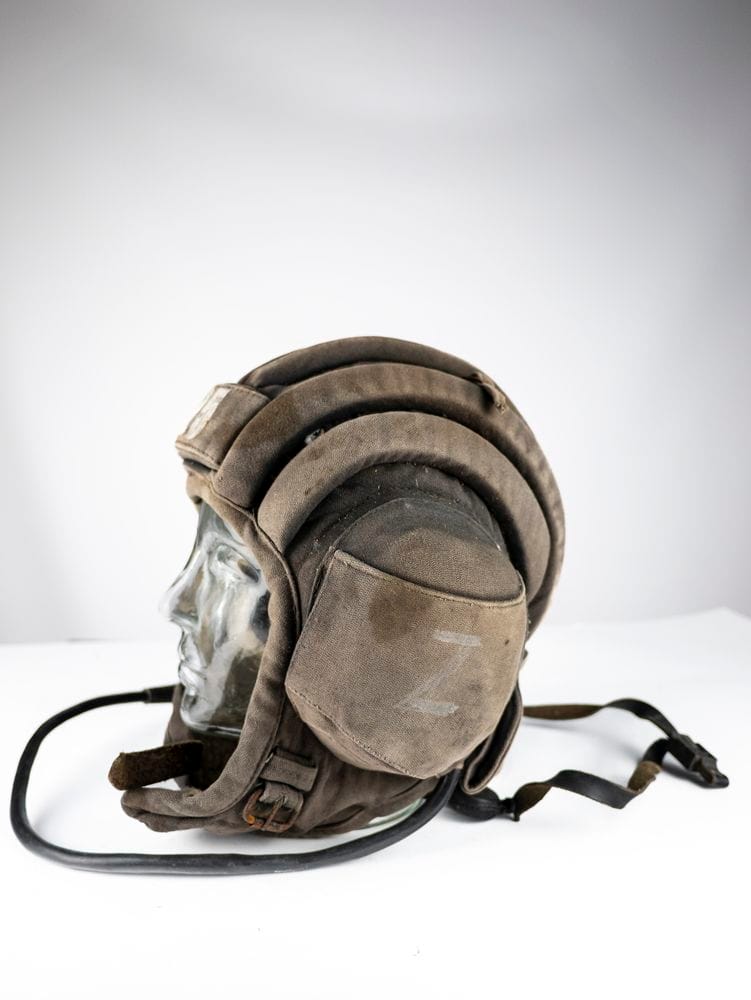
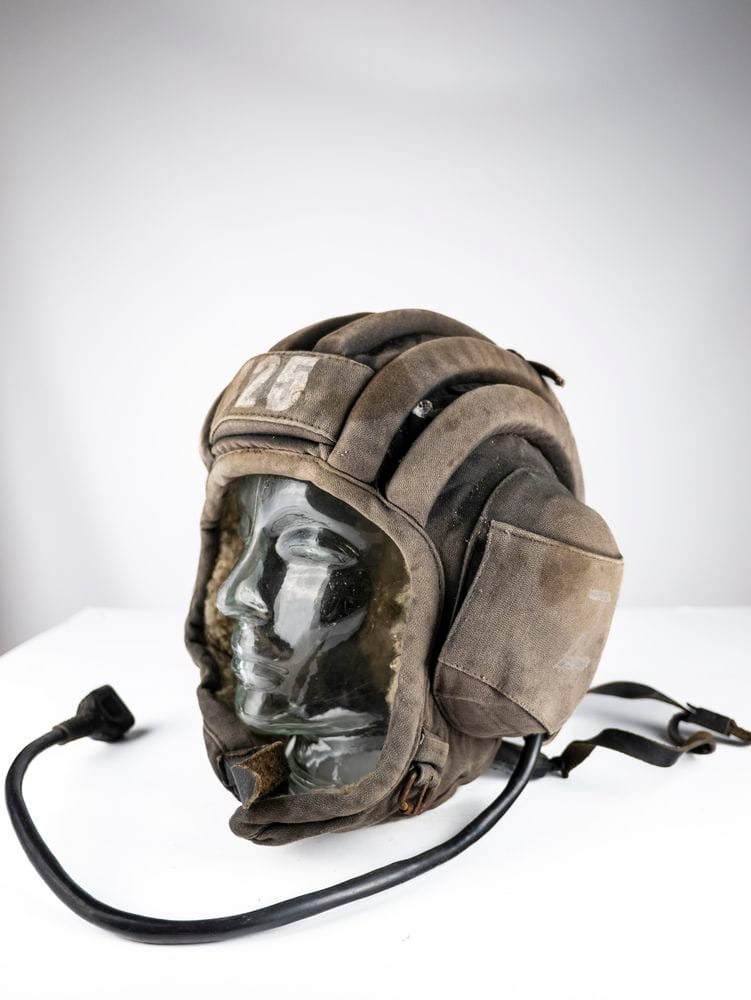
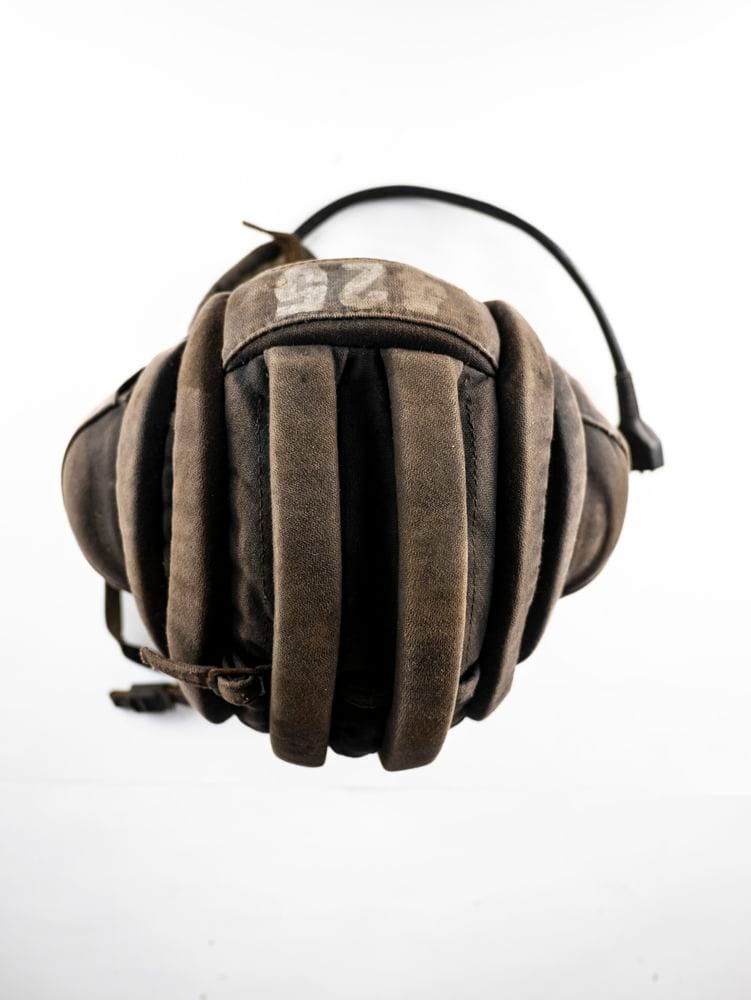
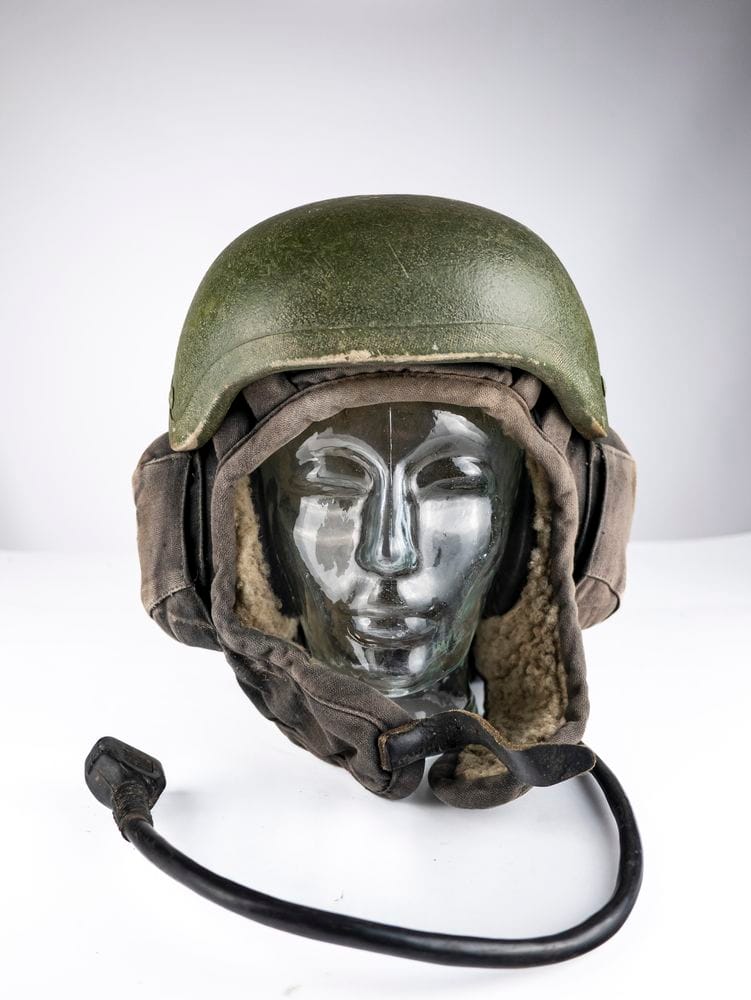
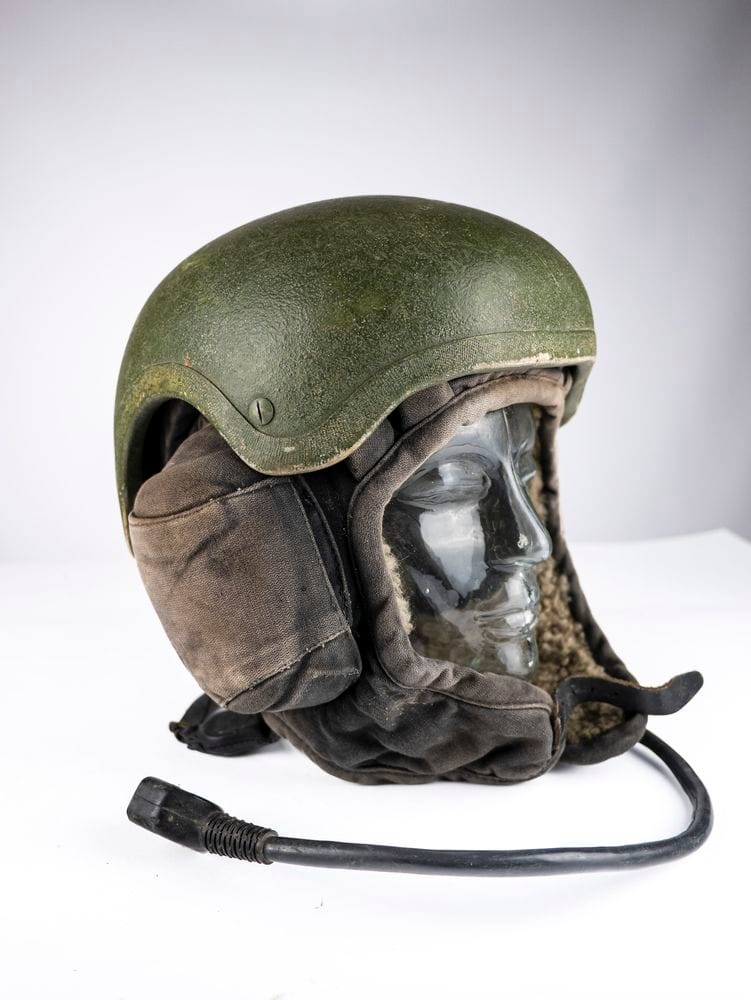
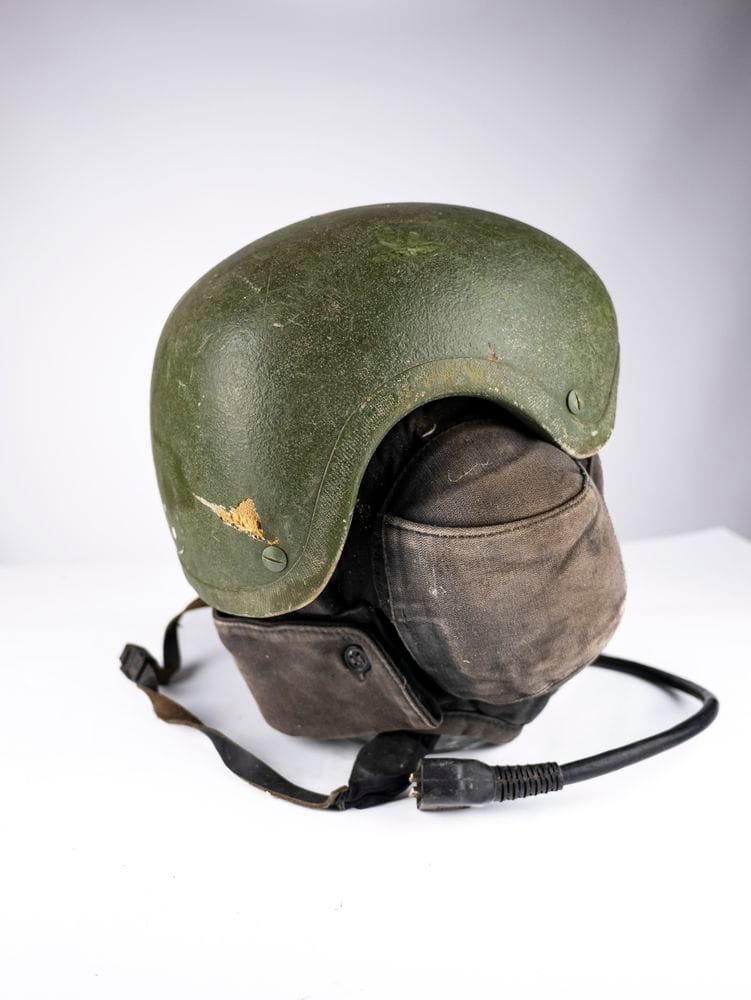

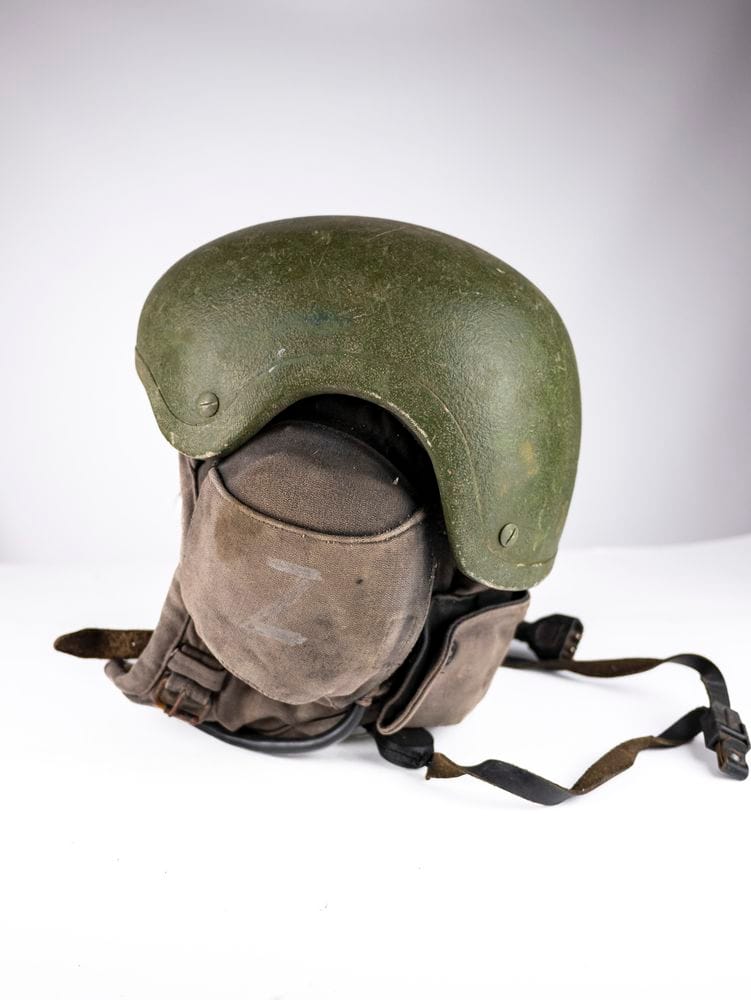
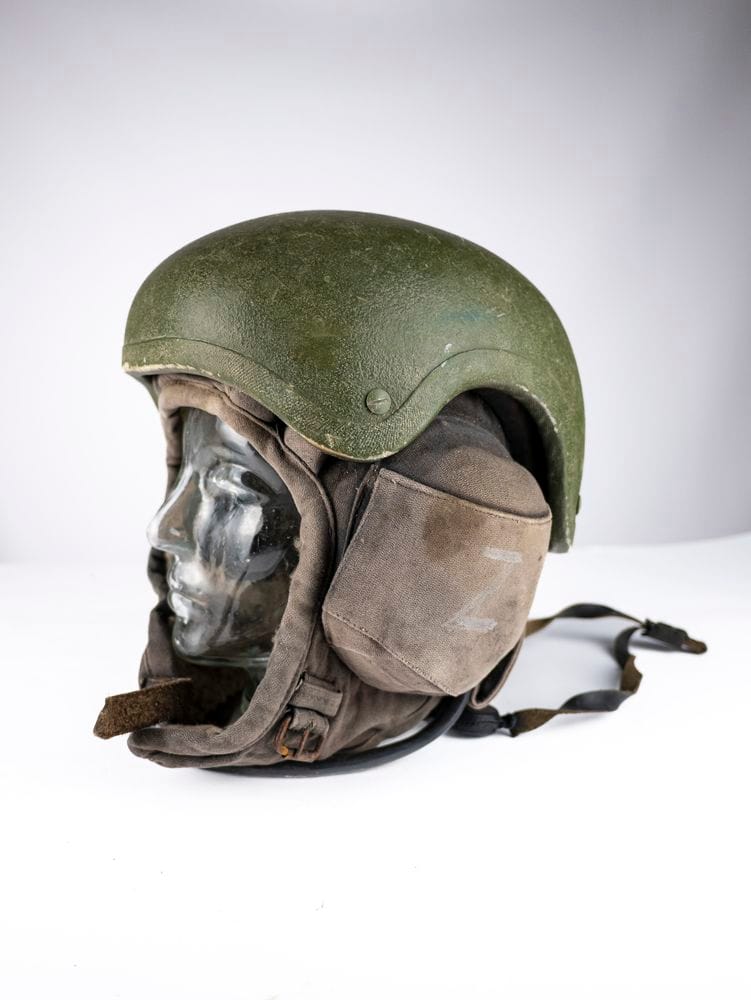
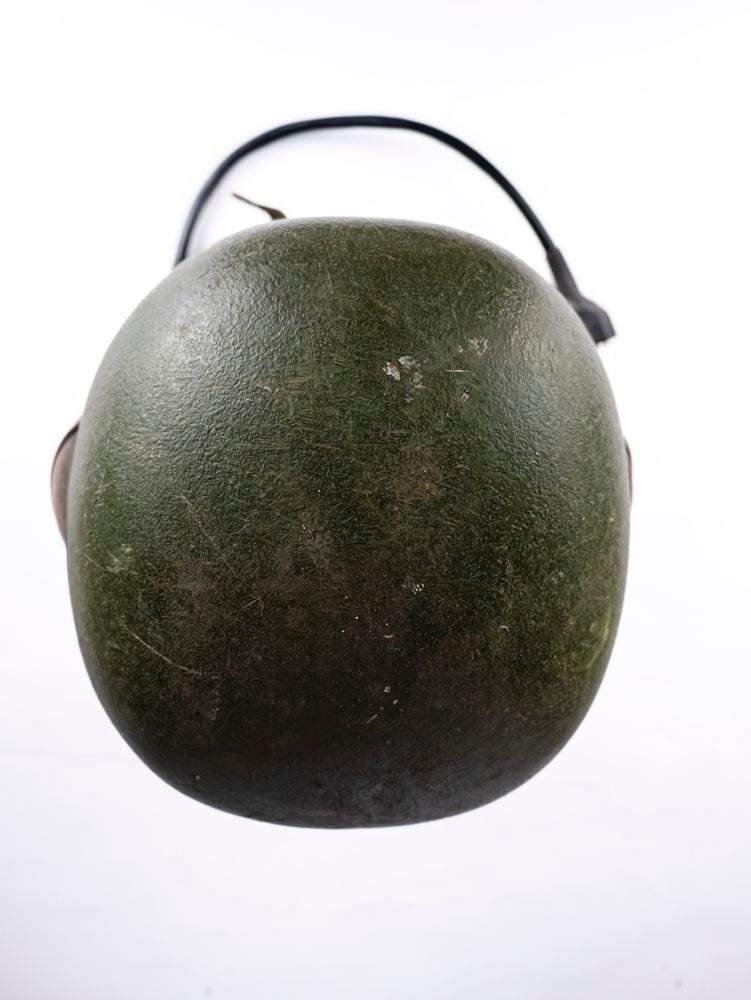

Tank helmet with the number 425 from the Soviet Union, with a Kevlar lining.
This is a standard, classic black tank helmet used by the Russian army. It has been tested for decades through aggressions first in the Soviet Union and later in the Russian Federation on the territories of independent states. This helmet was developed as early as 1934 and has hardly changed in more than 80 years. It reliably protects tank crew members’ heads from hitting the inside of the tank and other armored vehicles. However, it is not capable of protecting against other types of impact.
The hero of our helmet, number 425, added a “Z” to the side, as if it were his talisman. Unfortunately, it did not help him, and we will not lament his fate.
In 2012, the Russians developed a Kevlar lining for this helmet and named it the “Cowboy” armored helmet, which has no analogues in the world. We were not surprised, as no other army in the world has combined World War II technology with Kevlar.
Whether our 425th tank crew member was a Buryat cowboy or not, we do not know, but he left behind an item that has become part of our collection and history.
For more information about this helmet, you can read here: https://en.wikipedia.org/wiki/Helmet https://en.wikipedia.org/wiki/6B15
You can also see the Russian tank crew uniform here: https://www.youtube.com/watch?v=6E2oIZ7dayc


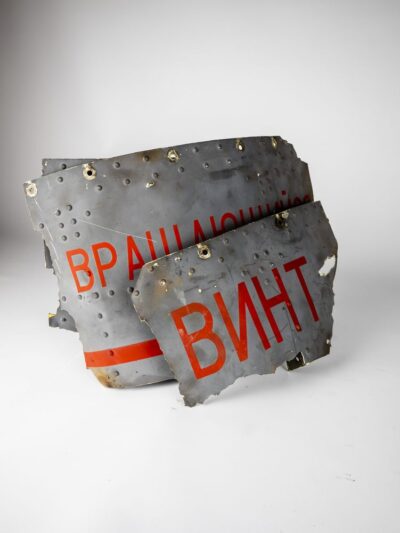
A unique trophy from the war in Ukraine. These are parts of a Russian helicopter MI-8AMTSh (“Terminator”), registration number RF-91882, destroyed by Ukrainian military on March 25, 2022 near Kharkiv. […]
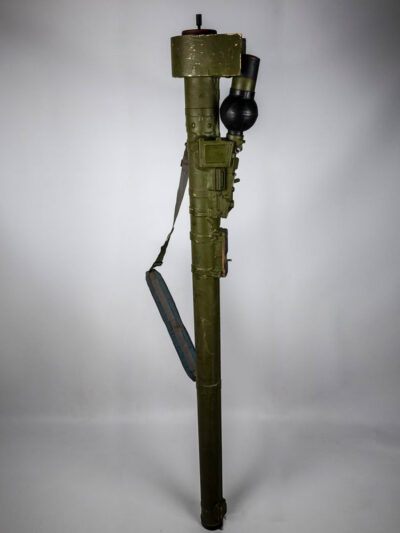
This portable surface-to-air missile system, the Igla (GRAU index 9K38, NATO reporting name SA-18 Grouse), is a legend of the Soviet Union. It was developed over 10 years and entered […]
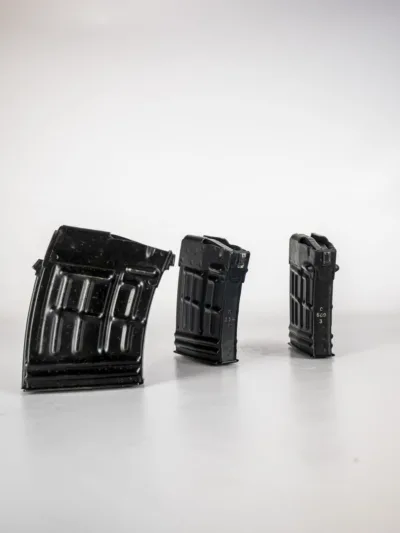
Magazines for the Dragunov sniper rifle (SVD). The ammunition feeding during shooting is done from a box magazine with a capacity of 10 rounds. Such original magazines are part of […]
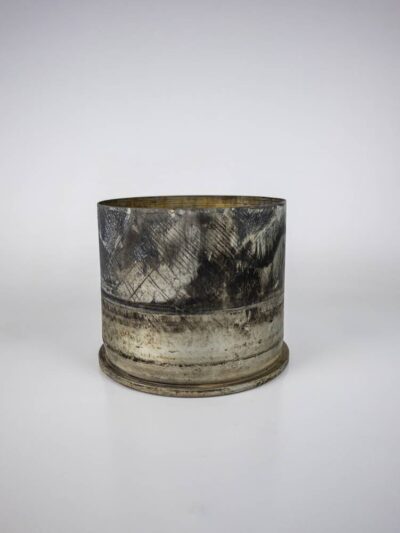
Iron is our love. Just like polished brass. Polished iron to the state of glass is something incredible. This is a short, small casing from a 125mm tank shell. We […]

